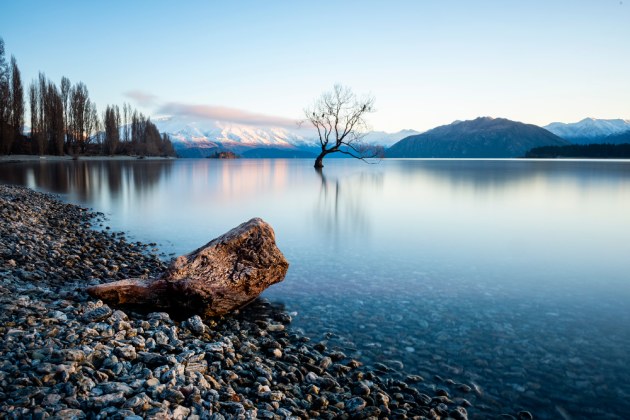Online it’s over-saturated with photographers competing to see who can shout the loudest on social media. With all the noise, and changing algorithms on the various platforms, it seems almost impossible to get your work noticed unless you’re comfortable paying for the privilege. So, is social media worth the time and effort? Christopher Quyen investigates.
Today, producing and accessing photographic content is within the reach of pretty much everyone. And more and more professional photographers are turning to social media as a way to try and build a solid and loyal following. But central to the whole model of trying to use these platforms to build one’s business is the requirement to share content. But as demand for content grew, the algorithms of popular social media platforms like Facebook and Instagram, which is owned by the former, also shifted to accommodate for the oversaturated state of the Internet. Facebook announced it would only be showing “high-quality content”, while Instagram announced it would only show “the moments you care about” first. Some photographers saw drops in engagement, ‘Likes’, and followers as their posts weren’t reaching their audience unless they were paid for. So, what exactly happened, and is social media still worth investing in as far as being an effective platform to generate and grow your business? Or is 2016 the year social media died?

Understanding algorithms
Before the changes, Facebook and Instagram operated on a chronological algorithm, meaning content would flow to your audience’s feed in the order it was posted. But as more and more content flooded these platforms, Instagram and Facebook adopted new algorithms that only shared what was deemed popular, interesting, or trending. Using these new algorithms, they both started scoring posts based on Likes, comments, and shares in order to judge whether it’s worth sharing. This can mean if your content does not reach a certain amount of engagement in a certain amount of time, its organic reach can be choked and you may be forced to pay to boost your post so that it can be seen followers. This change has affected fashion photographer Peter Coulson, who has over 250,000 followers on Facebook. “Social media is a massive part of my career, but I don’t recommend it as much to people now,” he says. “Every month since December, I’ve seen a 10% drop in engagement, and only 1% of my followers are seeing my content.” For photographers looking to get into the social media game, these algorithms could mean that investing time and effort might not be as rewarding as it once was.

Identity and influence
Overcoming the new algorithm is no easy task if you’re new to using social media for business, but limiting what you post on social media may just give your audience a reason to flock to your content. You’ll also need to ascertain who it is that you want to be on social media. Wedding photographer, James Day says that defining who you are on social media can be a great way to give your audience expectations of your work and engage with you. “What you post should depend on what your brand is,” he says. “If you are a personality brand, then share things from your life, and behind-the-scenes, but if you are a solutions brand, then share your work, and what you can provide for your clients.” By having a defined brand image, you can make sure you’re one of the first names that pops into your prospective client’s head when the word “photography” comes to mind.
But if you’re afraid that limiting your content may shoebox you creatively as a photographer, then perhaps becoming an ‘influencer’ is the pathway to take. An influencer can be defined as a person that acts as a voice of authority and influence on a particular subject or lifestyle. With over 454,000 followers, professional Instagrammer, Lauren Bath is among the field of photographers who have become influencers. “I’m a little different to most photographers in that my photography and my audience came hand-in-hand, and I sell myself as a freelance social media marketer, or influencer,” she says. Keeping an engaged audience has become an important facet of her career as it helps her provide value to her photography as a tourism marketer. Furthermore, by becoming an influencer, it can help increase your credibility as a photographer if potential clients see a lot of public interest in your work. “Photographers should prioritise social media above many things because it gives you important exposure to your work which can pay off in many ways,” Bath suggests. “Having an audience can make you more desirable to potential clients than someone without an audience.”

Content is still king
Content marketing is still by far the most effective form of marketing online. But what content should you be posting to increase your engagement? Creating the content you wish to consume is always a good place to start, as is sharing what you love shooting. This has been the case for photographer Luke Shadbolt whose surf and underwater photography has received considerable attention on Instagram, with a following now in excess of 110,000. “All the marketing I do is purely through social media, and I try to balance between my work and my personal interests,” he says. “What I broadcast through Facebook and Instagram tends to attract clients to utilise my existing style of photography, rather than their own vision.”
Video is also becoming increasingly popular on social media, And it seems to score higher on the algorithms, meaning your content won’t be choked. “When I post a picture, sometimes it may only get 100 Likes. However, when we did a live video, we got 150,000 views and a reach of 450,000 people. That’s the response I’d be getting for my pictures if Facebook didn’t choke my feed,” Coulson says. Many have speculated that this could be in response to Snapchat rejecting a $3 billion offer from Facebook to acquire the mobile app.

The Viral Effect
If enough people share your content, there is a possibility of it going viral. All this engagement in your post can “hijack” the algorithm your content may be featured throughout social media. This organic reach can grow your brand’s audience. For wedding photographer, Jonathan Suckling, a viral video of him dancing around for the perfect angle was all it took to bring him the attention his work needed. After it was shared on various Facebook pages that feature viral content, it accumulated millions of views, generated interest and enquiries into his work, and even international bookings for weddings. “Social media has a snowball effect. Once people start talking about you, it spreads to their friends through social media and one of them just may be a potential client,” he says. Recently, covering two weddings in Colombia, a number of other clients have also found their way to him via this viral video and the millions of views it has received. If you were to try to implement this “viral content marketing” into your social media strategy, having a large, tight-knit support group who you can call on to engage with your posts might be the best way to start. This can get the ball rolling on the initial engagement to your posts and give Facebook or Instagram a reason to prioritise your content on people’s news feeds. However, Suckling says that viral videos weren’t the only factor towards his success. Getting exposure online is great, but you have to have great work. “As a precursor, you need to have good work. No longer can you post crap and expect people to see it. You have to raise above that bar and post interesting content,” he says.

Paid posts and insights
With social media always pestering you to boost your posts to get them seen by more people, the solution to getting your content out there may be forking out money for views and exposure. However, while paid posts sounds promising, photographers like Coulson say the return on investment can be low as there are too many uncertain variables with social media. “If you spend enough time online, you’ll start to realise that ads do not work. The moment we realise something is an ad, we want to keep scrolling. Also, the people who give your post a Like may not always turn into a potential clients,” he says. Furthermore, paid posts only last for a certain period of time, or until a certain number of people interact with it. “Why would you want to fork out money for an ad every time you post just to get a couple of Likes or comments? There are better things to spend money on,” Day says.
Another facet of social media that can be useful are your ‘insights’. While it may be a great way to understand your audience to get higher engagement on your posts, many photographers don’t pay sufficient attention to these when it comes to posting. Instead, photographers such as Coulson have used these insights to determine the best locations to host his workshops by assessing where his most engaged audience, interested in photography, is located.

The web of social media
The Internet is a web of connections and you could be one connection away from a potential client or chatting with a magazine editor or an art director. Fine art photographer, Tom Blachford has used Instagram in order to foster relationships with directors of agencies and companies. “These people are incredibly busy and averse to cold-calling, but by following and interacting with them on Instagram, you can get their attention in an organic way,” he says. By building these relationships online, it has made reaching out to these people via phone or e-mail a lot easier for Blachford. As seen by Blachford, social media is just one part of this web, and one of many touchpoints. The main goal of social media should always be to attract potential clients to your website so that they can explore your work, and then contact you.
Beyond social media
Relying on social media is not the only marketing strategy that photographers should consider. Recently, James Day decided that social media isn’t the place to grow his business. “These days, I’m relying less on social media because I feel like everybody is playing the game. Once upon a time, social media was new and exciting and people were receptive to your content because you were one of the few people who would do it. Now, one potential client might be following hundreds of photographers on their socials,” he says. For the most part, social media is out of your control, and can be difficult to rely on to attract new business. Since realising this, Day has sought out other ways to reach his audience. “I prefer to invest in relationships, rather than social media,” he says. “I’ve gone back to trying to reach people in a way where I’m the only person that is suggested for a job through building relationships and targeted networking. You could spend $200 sponsoring a post which everyone will forget about, or you could spend a fraction of that money to take the owner of a venue out to a nice lunch and build a relationship where you have someone on the ground who’s always referring you.”

Copywriter Kate Toon has also triumphed SEO (search engine optimisation) as an important factor that photographers should not turn a blind eye to during their pursuit for social media glory. “For me, SEO is the most important. When consumers are on social media, they are there for many reasons. They are not in a buying state of mind. But if a consumer is searching for a photographer on Google, then it’s pretty clear they are looking to buy into something,” she says. With conversion from SEO being 300% higher than social media, it is something that photographers should try to tap into. Toon recommends blog content that can be ranked by search engines as a more effective way of bringing people to your website. Social media content can be transient and does not always drive traffic to your site. “Build your business on land that you own, not on land that someone else owns,” she says. However, Toon says that social media and SEO complement each other. “SEO is about driving people to your site, but social media can be a step towards getting someone to your site, or it can simply be an easier place to connect with people.”
Invest, invest, and invest
In the grand scheme of things, social media is only one facet of marketing your business. It’s somewhere for you to present a portfolio of your work, or to share yourself with the world. But ultimately, it’s an investment into shaping your identity. “You can’t be a button presser anymore. If you’re a button presser, then you are competing with the world. But, if you’ve got some soul and personality that you’re sharing with the world, then people are booking you for you and your vision,” says Coulson. Even with the new algorithms, it may be too early to conclude that social media is dead. It is still a valid place to build and market your business. But photographers need to see social media as only one of many touchpoints, and also invest in things like networking, SEO marketing, and building relationships.

Contact
- Lauren Bath laurenbath.com
- Tom Blachford www.tomblachford.com
- Peter Coulson www.peter-coulson.com.au
- James Day www.daylight.com.au
- Luke Shadbolt lukeshadbolt.com
- Jonathan Suckling www.jonathansuckling.com
- Kate Toon www.katetooncopywriter.com.au









